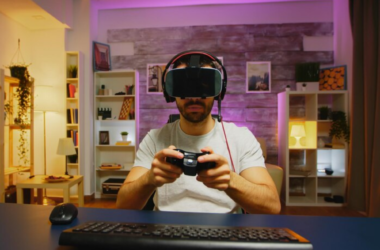From the imagined universe of the movie Ready Player One to real-life ones such as Roblox and Decentraland, metaverses are often caricatured as game-like virtual environments in which participants can live alternative lives in faraway worlds that all too often look like future dystopias.
Zilliqa, however, has an altogether different vision for metaverses. Early this year, the blockchain platform entered the metaverse space with Metapolis, a virtual space in which people can create digital products and economies using blockchain-based applications.
“Our vision, obviously, is to bridge the gap between the physical and the digital,” Zilliqa Head of Metaverse and NFTs Sandra Helou told Forkast in a video interview. “While gamification is a core aspect of what the engagement could be, it’s not the core focus, because for us, what’s also important is that people who are looking at bridging the physical with the digital also need to belong and have their communities and their end user. They need to have a place pretty much to just interact and have communications with each other.”
Described as “the world’s first metaverse-as-a-service platform,” Metapolis was unveiled in Miami in April, and aims to become the base for multiple metaverses in which clients from all kinds of enterprises can build customized metaverse experiences accessible through the Web, augmented reality (AR) and virtual reality (VR) with unprecedented interoperability.
Helou said: “I guess a perfect example to make this easier for the audience to kind of grasp it is when using Shopify, you enter the e-commerce store that’s built on Shopify, you don’t actually enter the Shopify business … If everyone out there is building a metaverse on a different layer or with different standards, then chances are that engagement is going to be lowered. Because imagine if every time you have to visit a website you have to change browsers. Chances are you probably wouldn’t do that. You’d stick to what you’re familiar with and what you know.”
Metapolis’s core goal is to become an engagement layer on top of the physical world, facilitating interactions between metaverses and the real world rather than creating a purely virtual experience. Emblematic of this is the platform’s recent International Yoga Day in the metaverse.
“What we’re looking at doing is the exact opposite of replacing the physical world. If anything, we want to integrate AR technology into it,” Helou said. “When you go to a yoga class or when any individual goes to a yoga class, we want that experience to also transcend with them back into the metaverse of what they’re doing … It’s not taking people and putting them behind their screen. It’s telling them, ‘Go out into the real world, but at the same time have the ability to engage with the real world in the digital world’.”
But to bridge the real world with countless metaverses, there is still a long road ahead for Metapolis and other projects, particularly when it comes to security, regulation and accountability. Watch Helou’s full interview with Forkast Editor-in-Chief Angie to learn more about regulations in metaverses, the importance of digital identities, and where future growth in Web3 lies.
- A new iteration of networks: “Every couple of years, we were near the point where we would need to iterate to the next feature that would allow further engagement for people to interact and connect and engage with each other. So the reason for that is that as we expand and grow, it kind of becomes a bit static and stale, how people communicate with each other … Web3 requires a new iteration of the internet … which is exactly what we’re building over at Metapolis … Our core focus is to give a data-centric and fully customizable XR (extended reality) experience, which is accessible through Web, AR and VR. So we want to make sure that people can access this world, the metaverse that we build, through any medium that they want to build, connect and engage in.”
- Security in metaverses: “Right now, people are still … exploring what the metaverse could become. And that’s happening through these gamified worlds. So technically, security has not played a very crucial part yet. But if we want to build a world that’s accessible, continuously on, always open, and build on engagement, then security plays a very important role. And I think that as more corporations — large corporations from different sectors of businesses such as banking, the financial sector, luxury, fashion and even education — as they start to venture more critically into what the metaverse will become, then obviously that will need to play a very big role and the security functions that they bring to their users.”
- Regulation in Web3: “(Regulation) cannot be done by people who are still focusing on a Web2 and a Web1 vision, because the rules and ways of engagement in Web3 differ completely. The way I would interact with you through a website is completely different to how I would interact with you in the metaverse, and the rules kind of bend. They don’t stay exactly the same way. At the end of the day, I’m in a country and you’re in a country right now. We’re having this kind of conversation. But in the future, your avatar could be touching fingers with my avatar in the metaverse.”
- Blockchain confirmation bias: “People had already kind of built that idea around, ‘Ok, so blockchain could equal money laundering, it could equal this and that’ … Realistically, if you think about that, that doesn’t really stem from a data point. Because if you look at the data that we currently have, the criminal, or crime within the blockchain space has actually gone down massively, I mean, previously from what it was … If people continue having this pre-perceived bias towards what Web3 or blockchain is, then it’ll be difficult to get from point A to point B, and, at the end of the day, I think we all need to understand that, 100%, we cannot make everyone happy. So there will always be issues somewhere or another.”
- Avatars as digital identities: “The reason why the avatar linking to your digital identity is important for us is … besides the security issues, the ease and the ability to enter different industries and be able to complete and engage in tasks that you probably couldn’t in the physical world … Usually people are stuck in either a city or they’re stuck in the country that they live in, and if they want to venture out, they have to do an exchange program. Not everyone has the means to do that or the ability to even have that access. The same opportunities could belong to them and should. So for us, this is why the avatar plays an important role — because it’s a representation of who you are in the physical world, translated into the digital world.”
Source: Forkast News




